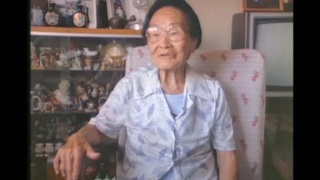Interviews
Celebrating his birthday on December 7, 1941
Well I will never forget the time that I heard about December 7th, the bombing of Pearl Harbor. I remember running home from a movie, and it was all kind of clamor out in the streets. It’s something that hits you and yet you are not sure what the future is going to hold, so you don’t know. But you know that something important had happened, something that is going to change your life happened. You didn’t know what is going to happen, but you knew something happened. And that was my feeling.
I always kind of kid about it, and I say, yeah I was celebrating my birthday with a bang. But it was our first pre-emptive strike by Japan to our own nation, to our own land. That had kind of a scary feeling for me, also, a kind of unknown future. You just had to wait and see.
Date: March 4, 2005
Location: California, US
Interviewer: Florence Ochi, Art Hansen, Yoko Nishimura
Contributed by: Watase Media Arts Center, Japanese American National Museum






